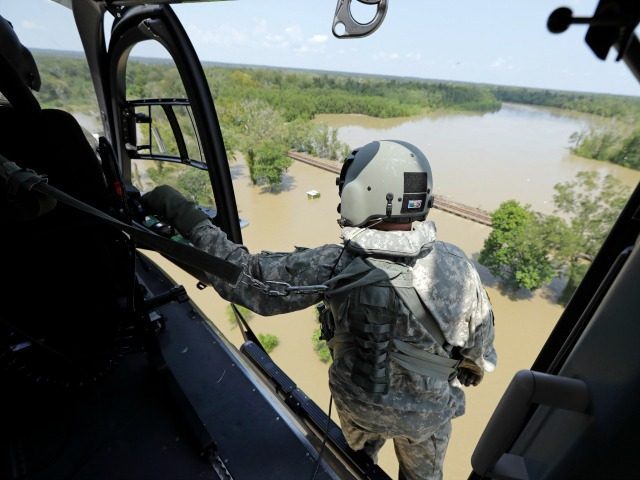The White House confirmed late Tuesday that it will deploy the National Guard to help secure the U.S. border with Mexico.
The statement said:
Last week, the President received a briefing from senior administration officials on the growing influx of illegal immigration, drugs and violent gang members from Central America, and directed a vigorous administrative strategy to confront this threat and protect America’s national security.
Today, he received a follow up briefing to discuss his administration’s strategy, which includes the mobilization of the National Guard. President Trump and senior officials present also agreed on the need to pressure Congress to urgently pass legislation to close legal loopholes exploited by criminal trafficking, narco-terrorist and smuggling organizations.
Among those briefing the President were Defense Secretary James Mattis, Homeland Security Secretary Kirsten Nielsen, Attorney General Jeff Sessions, Chairman of the Joint Chiefs General Joseph Dunford, Chief of Staff John Kelly, and other senior White House officials.
“We’re going to be doing things militarily,” Trump said Tuesday at a White House meeting. “Until we can have a wall and proper security, we’re going to be guarding our border with the military.”
Trump is being forced to deploy the National Guard because Democrats — and business-first Republicans — blocked his immigration reforms plan in a February 15 vote. Trump’s plan offered a generous amnesty to at least two million illegal immigrants in exchange for funding for a border wall, ending the visa lottery, winding down chain-migration and patching the various legal loopholes which allow migrants to exploit Congress’ “catch and release” laws.
Democratic leaders also worked with Republican leaders to cut Trump’s border spending in 2018. They denied increased funding for extra border agent, extra detention beds, and extra border barriers, despite the 2016 election results. The March omnibus only allows construction of 50 miles of new fencing along the 2,000-mile border.
The opposition from Congress leaves Trump with fewer tools to stem the wage-cutting illegal and legal immigration into the United States. But he is using his power over the agencies to improve immigration policies and border defenses, and also is using his power as Commander-in-Chief to deploy the National Guard to the border.
The Trump mobilization stands in sharp contrast to the welcome policies set by former President Barack Obama. Those policies allowed more than 400,000 Central American economic migrants into the United States to plead for asylum designed to help persecuted individuals.
Very few of the migrants have won their asylum cases, partially because many did meet their court appointments. This meant that Obama’s policies have allowed hundreds of thousands of migrants to live and work in the United States for years.
That progressive concern for distant foreigners delivered migrant MS-13 gang members into Americans’ neighborhoods, filled up the public schools used by working-class Americans, and reduced the pressure on U.S. employers to raise Americans’ wages, hire sidelined Americans or train young Americans. This “telescopic philanthropy” for foreigners rather than nearby Americans also helped persuade the public to elect Donald Trump in 2016.
The Trump announcement did not say how the National Guard could be used.
However, Jessica Vaughan, policy director at the Center for Immigration Studies, says the Guard can be used to build emergency processing centers, where federal judges can quickly review the migrants’ claims for asylum.
The Guard could also provide other support services to the border patrol, ensuring the patrol has enough personnel to quickly jump on cartel smuggling operations that are often conducted amid the rush of illegal immigrants.
The Guard also operates transport aircraft which can be used to quickly return migrants to their home countries, she said.
The pending rise in 2018 migration was spotlighted by the northward “caravan” march of at least 1,500 migrants. The open-borders organizers say they will limit their march, but they are also providing cover for other migrants to reach established smuggling routes in Mexico.
However, border officials say the immigration wave has already arrived and is forcing them to adopt “catch and release” policies because they do not have enough detention beds, immigration judges, and aircraft to process asylum claims and repatriate migrants within the deadline of 72 hours set by Congress.

COMMENTS
Please let us know if you're having issues with commenting.